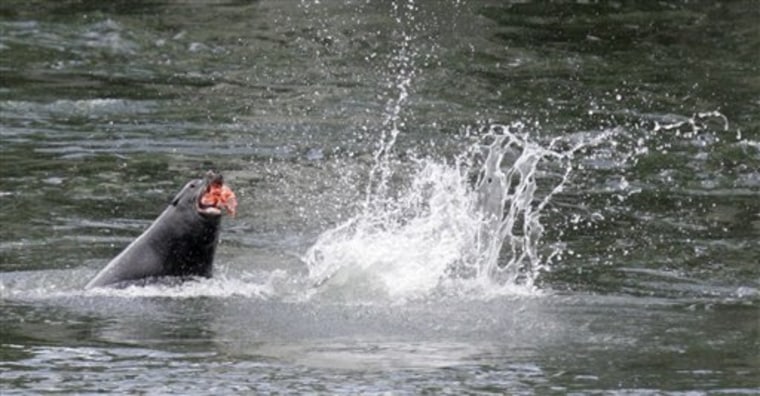The Humane Society of the United States wants a federal judge to prevent the capturing or killing of sea lions feasting on salmon a Columbia River dam.
The group said in a motion filed in U.S. District Court on Friday that agents could begin taking the sea lions as soon as next weekend, and asked for a permanent injunction. If the request is denied, the group said it would likely would seek a temporary restraining order to be effective before Friday.
In January, the National Marine Fisheries Service authorized the taking of up to 85 sea lions a year for five years from the Bonneville Dam, although it recommended a lower number.
The order encourages capturing the animals if possible and finding homes for them in aquariums and ocean theme parks but said they can be euthanized after 48 hours if no homes are found.
The Humane Society says homes could be found for only a few. It contends dams, birds and environmental damage pose a larger danger to salmon.
Sea lions are protected under the 1972 Marine Mammals Protection Act. An amendment permits the killing of sea lions if Columbia River states get federal permission. Oregon and Washington asked for the permission in 2006, and Idaho offered its support.
Such permission has been granted only once before — in the 1990s for sea lions in the Ballard Locks in Puget Sound in Washington. Five animals were identified as offenders that drastically diminished a steelhead run that has yet to recover.
Three were taken in by an aquatic park before they were killed. The fate of the two others has not been made public.
Sea lion populations have soared since they and other marine mammals were covered under the 1972 act. They numbered about 1,000 in the 1930s, when they were hunted and used, among other purposes, for dog food. They are thought to number about 240,000 today.
